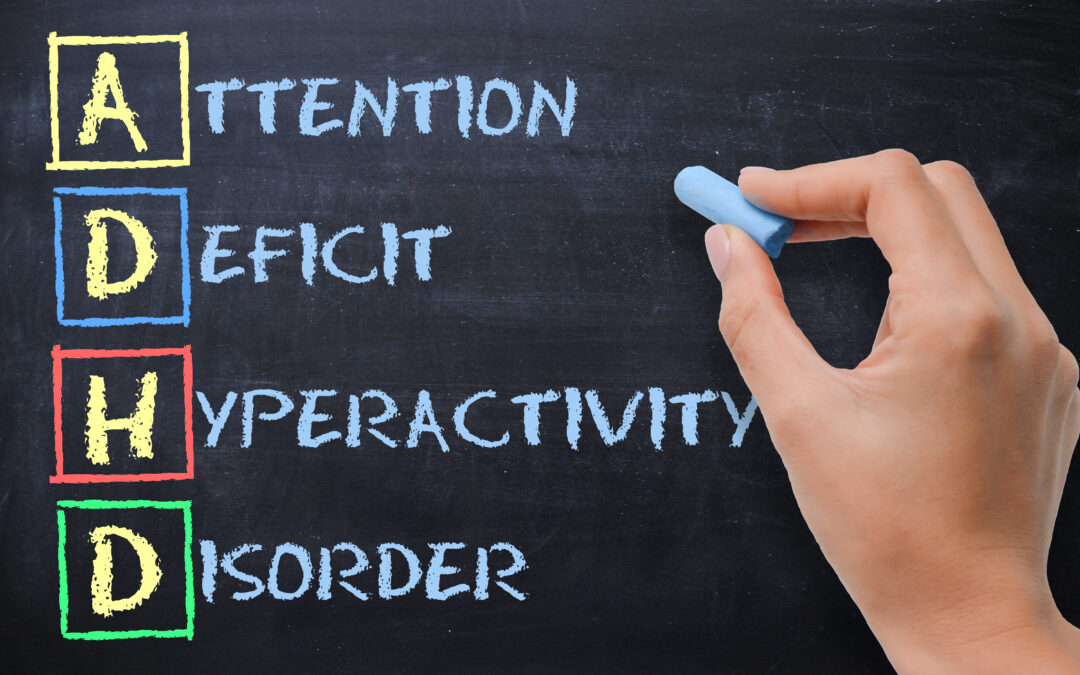Attention-deficit/hyperactivity disorder (ADHD) has traditionally been conceptualized as a neurodevelopmental disorder with onset in childhood. However, recent research has challenged this view, suggesting that ADHD may also emerge in adulthood for some individuals. This essay critically examines the evidence for ADHD as a developmental disorder versus a condition that can occur in adulthood, drawing on recent scientific findings.
ADHD as a Neurodevelopmental Disorder
The conceptualization of ADHD as a neurodevelopmental disorder with childhood onset is deeply ingrained in psychiatric nosology. The Diagnostic and Statistical Manual of Mental Disorders, Fifth Edition (DSM-5) requires symptom onset before age 12 for diagnosis (American Psychiatric Association, 2013). This criterion reflects the long-standing view that ADHD originates in childhood neurodevelopment.
Neuroimaging studies have provided support for ADHD as a neurodevelopmental disorder. Research has consistently found structural and functional brain differences in individuals with ADHD compared to controls. A meta-analysis by Hoogman et al. (2017) found reduced volumes in several subcortical brain regions in ADHD, with the most pronounced differences in childhood. These findings suggest altered neurodevelopmental trajectories in ADHD.
Longitudinal studies have demonstrated that ADHD symptoms and associated impairments often persist from childhood into adulthood. A systematic review and meta-analysis by Faraone et al. (2021) found that approximately 30% of individuals diagnosed with ADHD in childhood continued to meet full diagnostic criteria in adulthood, while an additional 60% experienced partial remission with residual symptoms or impairment. This persistence supports the conceptualization of ADHD as a lifelong neurodevelopmental disorder.
Genetic studies have also provided evidence for ADHD as a developmental disorder. Twin studies consistently show high heritability of ADHD, estimated at around 74% (Faraone & Larsson, 2019). Genome-wide association studies have identified genetic risk variants associated with ADHD, many of which are involved in neurodevelopmental processes (Demontis et al., 2019). The strong genetic component and overlap with other neurodevelopmental disorders support ADHD’s classification as a neurodevelopmental condition.
Evidence for Adult-Onset ADHD
Despite the strong evidence for ADHD as a neurodevelopmental disorder, recent research has challenged the notion that symptom onset must occur in childhood. Several longitudinal studies have identified individuals who appear to develop ADHD symptoms for the first time in adulthood.
A seminal study by Moffitt et al. (2015) followed a birth cohort in New Zealand to age 38. They found that 90% of adults who met criteria for ADHD did not have a history of childhood ADHD. These individuals with apparent adult-onset ADHD showed similar levels of impairment and comorbidity as those with childhood-onset persistent ADHD. This study raised the possibility of a distinct adult-onset ADHD syndrome.
Similar findings have been reported in other longitudinal cohorts. Agnew-Blais et al. (2016) found that 67.5% of young adults with ADHD in their UK sample did not meet criteria for the disorder in childhood. Caye et al. (2016) reported that 84.6% of adults with ADHD in their Brazilian sample did not have childhood ADHD. These consistent findings across diverse populations suggest that adult-onset ADHD may be a genuine phenomenon.
Neuroimaging studies have found both similarities and differences between childhood-onset and adult-onset ADHD. Sibley et al. (2018) compared brain structure and function in individuals with childhood-onset persistent ADHD, adult-onset ADHD, and controls. They found that both ADHD groups showed similar alterations in white matter integrity and functional connectivity compared to controls. However, the adult-onset group also showed unique patterns of increased cortical thickness. These findings suggest that adult-onset ADHD may have both shared and distinct neurobiological features compared to childhood-onset ADHD.
Genetic studies have also provided some support for the validity of adult-onset ADHD. Rovira et al. (2020) conducted a genome-wide association study comparing individuals with childhood-onset and adult-onset ADHD. They found significant genetic correlation between the two groups, suggesting shared genetic liability. However, they also identified genetic variants uniquely associated with adult-onset ADHD, supporting its distinction as a potentially separate entity.
Challenges to the Adult-Onset ADHD Concept
While the evidence for adult-onset ADHD is compelling, several researchers have raised important challenges to this concept. One major concern is the possibility of missed diagnosis in childhood rather than true adult onset.
Faraone and Biederman (2016) argued that apparent adult-onset cases may represent delayed recognition of symptoms that were present but undetected in childhood. They emphasized the importance of careful retrospective assessment to identify subclinical or masked childhood symptoms. This view is supported by studies showing that many adults with ADHD report childhood symptoms when assessed thoroughly, even if they did not meet full diagnostic criteria (Breda et al., 2020).
Another challenge is the potential role of other mental health conditions in mimicking ADHD symptoms. Sibley et al. (2018) found that many cases of apparent late-onset ADHD could be better explained by other factors, such as substance use, mood disorders, or non-impairing cognitive fluctuations. They emphasized the importance of careful differential diagnosis and consideration of alternative explanations for adult ADHD symptoms.
The stability of adult-onset ADHD diagnoses has also been questioned. Lopez et al. (2018) found that only 5% of individuals with apparent adult-onset ADHD at age 18 continued to meet criteria at age 25. This instability raises questions about the validity and clinical utility of the adult-onset ADHD concept.
Reconciling Developmental and Adult-Onset Perspectives
Given the complex and sometimes conflicting evidence, a nuanced view of ADHD across the lifespan is emerging. While ADHD remains primarily conceptualized as a neurodevelopmental disorder, adult-onset presentations likely reflect a combination of factors:
1. Late recognition of persistent symptoms: Some cases of apparent adult-onset ADHD may represent delayed identification of symptoms that were present but unrecognized in childhood. Improved awareness and assessment of adult ADHD may contribute to increased detection.
2. Environmental unmasking: Increased life demands and reduced support structures in adulthood can unmask or amplify previously compensated symptoms. This may lead to the emergence of clinically significant ADHD in adulthood, even if subclinical symptoms were present earlier.
3. Neurodevelopmental heterogeneity: ADHD may have variable developmental trajectories, with some individuals showing later symptom onset or exacerbation. This heterogeneity could reflect complex interactions between genetic and environmental factors across development.
4. Distinct adult-onset subtype: A subset of adult-onset ADHD cases may represent a genuinely distinct disorder with unique etiology and characteristics. However, more research is needed to confirm this possibility and delineate its features.
Faraone et al. (2021) proposed a comprehensive model of ADHD as a complex neurodevelopmental spectrum disorder. This model acknowledges the primarily developmental nature of ADHD while allowing for heterogeneity in symptom onset and trajectories. It incorporates the possibility of adult-onset presentations within a broader developmental framework.
Implications for Diagnosis and Treatment
The evolving understanding of ADHD across the lifespan has important implications for clinical practice. The DSM-5 made some changes to facilitate the diagnosis of ADHD in adults, such as reducing the number of symptoms required and providing adult-specific examples (American Psychiatric Association, 2013). However, the requirement for symptom onset before age 12 remains a potential barrier to diagnosing adult-onset cases.
Some researchers have argued for more flexible diagnostic criteria that recognize the potential for symptom emergence or recognition in adulthood (Asherson et al., 2016). However, this must be balanced against the risk of overdiagnosis and inappropriate treatment. Careful assessment remains crucial, including thorough evaluation of childhood symptoms, impairment, psychiatric history, and substance use.
Treatment approaches for adult ADHD, whether childhood-onset or adult-onset, generally include a combination of pharmacotherapy and psychosocial interventions. Stimulant medications remain the first-line pharmacological treatment, with non-stimulant options available for those who do not respond or have contraindications (Kooij et al., 2019). Cognitive-behavioral therapy and other psychosocial interventions can help adults develop coping strategies and address functional impairments (Young et al., 2020).
Future Directions
While significant progress has been made in understanding ADHD across the lifespan, several key questions remain:
1. What are the precise neurobiological and genetic differences between childhood-onset and adult-onset ADHD, if any?
2. How can we improve early detection and intervention for individuals at risk of developing clinically significant ADHD in adulthood?
3. What are the long-term outcomes and stability of adult-onset ADHD diagnoses?
4. How can diagnostic criteria and assessment tools be optimized to accurately identify ADHD across different developmental stages?
Longitudinal studies with comprehensive assessments from childhood through adulthood will be crucial to addressing these questions. Advanced neuroimaging techniques and genetic analyses may help elucidate the biological underpinnings of different ADHD trajectories.
Conclusion
The question of whether ADHD is solely a developmental disorder or can also occur in adulthood remains a topic of active debate. The weight of evidence supports ADHD as primarily a neurodevelopmental disorder with origins in childhood. However, recent research has highlighted the complexity of ADHD’s developmental trajectories and the possibility of symptom emergence or recognition in adulthood.
A nuanced view recognizes ADHD as a heterogeneous condition with variable developmental pathways. While most cases likely have roots in childhood neurodevelopment, adult-onset presentations may reflect a combination of factors, including delayed recognition, environmental unmasking, and potentially distinct etiologies.
This evolving understanding has important implications for diagnosis and treatment across the lifespan. Clinicians should maintain a developmental perspective while remaining open to the possibility of adult-onset presentations. Careful assessment and consideration of alternative explanations for symptoms are crucial.
Future research will continue to refine our understanding of ADHD’s complex developmental nature and improve our ability to identify and treat the disorder effectively across all ages. Ultimately, a lifespan approach to ADHD that recognizes both its neurodevelopmental origins and potential for adult emergence or exacerbation may best capture the complexity of this prevalent and impairing condition.
References
Agnew-Blais, J. C., Polanczyk, G. V., Danese, A., Wertz, J., Moffitt, T. E., & Arseneault, L. (2016). Evaluation of the persistence, remission, and emergence of attention-deficit/hyperactivity disorder in young adulthood. JAMA Psychiatry, 73(7), 713-720.
American Psychiatric Association. (2013). Diagnostic and statistical manual of mental disorders (5th ed.). Arlington, VA: American Psychiatric Publishing.
Asherson, P., Buitelaar, J., Faraone, S. V., & Rohde, L. A. (2016). Adult attention-deficit hyperactivity disorder: Key conceptual issues. The Lancet Psychiatry, 3(6), 568-578.
Breda, V., Rohde, L. A., Menezes, A. M. B., Anselmi, L., Caye, A., Rovaris, D. L., … & Grevet, E. H. (2020). Revisiting ADHD age-of-onset in adults: To what extent should we rely on the recall of childhood symptoms? Psychological Medicine, 50(5), 857-866.
Caye, A., Rocha, T. B. M., Anselmi, L., Murray, J., Menezes, A. M. B., Barros, F. C., … & Rohde, L. A. (2016). Attention-deficit/hyperactivity disorder trajectories from childhood to young adulthood: Evidence from a birth cohort supporting a late-onset syndrome. JAMA Psychiatry, 73(7), 705-712.
Demontis, D., Walters, R. K., Martin, J., Mattheisen, M., Als, T. D., Agerbo, E., … & Neale, B. M. (2019). Discovery of the first genome-wide significant risk loci for attention deficit/hyperactivity disorder. Nature Genetics, 51(1), 63-75.
Faraone, S. V., & Biederman, J. (2016). Can attention-deficit/hyperactivity disorder onset occur in adulthood? JAMA Psychiatry, 73(7), 655-656.
Faraone, S. V., & Larsson, H. (2019). Genetics of attention deficit hyperactivity disorder. Molecular Psychiatry, 24(4), 562-575.
Faraone, S. V., Banaschewski, T., Coghill, D., Zheng, Y., Biederman, J., Bellgrove, M. A., … & Wang, Y. (2021). The World Federation of ADHD International Consensus Statement: 208 evidence-based conclusions about the disorder. Neuroscience & Biobehavioral Reviews, 128, 789-818.
Hoogman, M., Bralten, J., Hibar, D. P., Mennes, M., Zwiers, M. P., Schweren, L. S., … & Franke, B. (2017). Subcortical brain volume differences in participants with attention deficit hyperactivity disorder in children and adults: A cross-sectional mega-analysis. The Lancet Psychiatry, 4(4), 310-319.
Kooij, J. J. S., Bijlenga, D., Salerno, L., Jaeschke, R., Bitter, I., Balázs, J., … & Asherson, P. (2019). Updated European Consensus Statement on diagnosis and treatment of adult ADHD. European Psychiatry, 56(1), 14-34.
Lopez, R., Micoulaud-Franchi, J. A., Galera, C., & Dauvilliers, Y. (2018). Is adult-onset attention deficit/hyperactivity disorder frequent in clinical practice? Psychiatry Research, 260, 294-296.
Moffitt, T. E., Houts, R., Asherson, P., Belsky, D. W., Corcoran, D. L., Hammerle, M., … & Caspi, A. (2015). Is adult ADHD a childhood-onset neurodevelopmental disorder? Evidence from a four-decade longitudinal cohort study. American Journal of Psychiatry, 172(10), 967-977.
Rovira, P., Demontis, D., Sánchez-Mora, C., Zayats, T., Klein, M., Mota, N. R., … & Ribasés, M. (2020). Shared genetic background between children and adults with attention deficit/hyperactivity disorder. Neuropsychopharmacology, 45(10), 1617-1626.
Sibley, M. H., Rohde, L. A., Swanson, J. M., Hechtman, L. T., Molina, B. S., Mitchell, J. T., … & Multimodal Treatment Study of Children with ADHD (MTA) Cooperative Group. (2018). Late-onset ADHD reconsidered with comprehensive repeated assessments between ages 10 and 25. American Journal of Psychiatry, 175(2), 140-149.
Young, S., Adamo, N., Ásgeirsdóttir, B. B., Branney, P., Beckett, M., Colley, W., … & Woodhouse, E. (2020). Females with ADHD: An expert consensus statement taking a lifespan approach providing guidance for the identification and treatment of attention-deficit/hyperactivity disorder in girls and women. BMC Psychiatry, 20(1), 404.

Experimental Psychologist, Cogntive Neuroscientist, Machine Learning Architect & Psychotherapist



